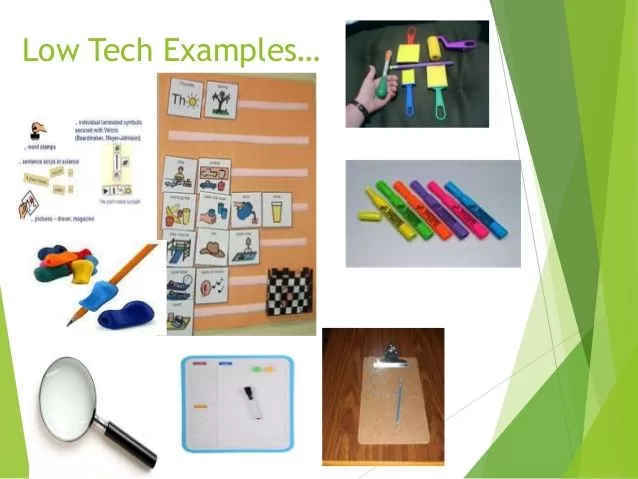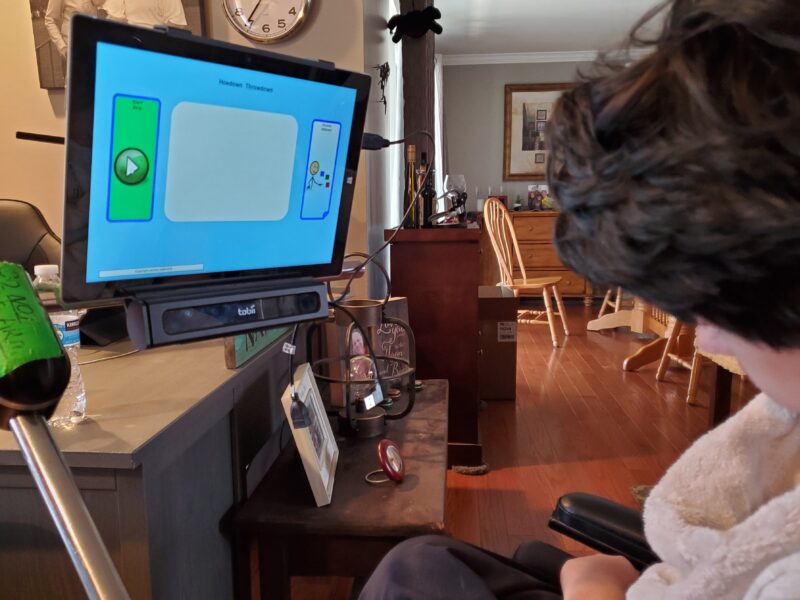Parents often think of Assistive Technology (AT) as high-tech devices. Communication boards that can be controlled with eye gaze are used by students who cannot speak and might not have functional use of their limbs. Or an app that reads text to students on the computer. But, while not as exciting, it can also be modified scissors so the student can take part in class activities. It could be a graphic organizer to help the student organize ideas and assist with reading comprehension. It doesn’t have to be an electronic device to be assistive technology.
Ed Department Warning
This week, the Office of Special Education Programs, through the US Department of Education, sent out a “Dear Colleague Letter” reminding educational agencies of their requirements on assistive technology (AT) under the Individuals with Disabilities Educational Act (IDEA). Essentially, they were clarifying that schools need to make sure students with disabilities were “provided with equality of educational opportunities that lead to full participation, independent living, and economic self-sufficiency.” Sometimes, this means AT devices are needed. But, it is required by law that AT is considered in every IEP.
Don’t Overlook Low-Tech
While high-tech has its place in education, parents often fail to consider the low-tech strategies that can be employed in a classroom and at home to facilitate their child’s learning. Students with learning disabilities tend to be visual learners. So, they can remember information better when ideas and concepts are associated with charts, diagrams, and maps. Providing graphic organizers, like a mind map or a flow chart, in a classroom is an easy low-tech way to help them understand the material and make connections to past learning. As a retired teacher, I would argue that all students benefit from graphic organizers.

If your child has a weak or underdeveloped hand and finger grasp, it might be hard for them to write in class. In this situation, parents may want their student to be provided a copy of the teacher’s notes or have an aide take notes for their child. These may be necessary modifications. But, in addition, parents could simply ask for a pencil grip to help their child write during class. Or, have both. There can be an accommodation of receiving teacher notes and a goal for the child to use the pencil grip during class XX amount of time with XX accuracy to determine if they can do some of the writing on their own.
Have Clear IEP Goals
Whether you choose high-tech or low-tech or something in between, it is important to have clear goals that define the use of the technology in context. If not, the school is not required to use the assistive technology. Be sure that the IEP goal defines the use and progress of the AT.
For example:
Define Use and Define Progress (by the end of the year…)- time, quantity, and overall results.
“Using a book holder and page-turner, the student will read a selected text to provide an oral response and demonstrate the ability to summarize and conclude with 80 % accuracy.”
Goals must have measurable and observable outcomes, so the IEP team can review progress to determine whether the AT has had an impact. Therefore, the goal should include the use of the AT. Remember, the AT is a tool to help your child reach an IEP goal. Have the goals in mind first and then determine if your child needs AT to reach that goal.
Questions to Consider During the IEP Process
Before the IEP is concluded (ideally in the planning stages) be sure these areas are addressed:
–What technology will be available? Be sure the IEP is clear about what AT will be used and what will happen if there is a problem with the defined AT. If an app isn’t working, how will your child be accommodated?
–How will the technology be used? It is important to determine the use of the technology. Providing AT is not enough, the student needs to be able to functionally use it in the classroom or activity. Will the teacher provide a graphic organizer or will your child be responsible for creating one?
–Under which circumstances will they use the AT? If they can use a graphic organizer during class to organize their thoughts, will they be able to use it when writing an essay or taking a test in class?
– Is the AT related to IEP goals? If the technology is not related to a goal, then it might be easy for the school to eliminate the AT. They can’t change a goal without meeting with you, so it would be harder for them to eliminate the AT if it is part of a goal. Also, if there is a problem with the services, it is easy to remind the school that they are not addressing a goal written in the IEP. It has more importance if it is connected directly to a goal.
– Are services and training on the AT written into the IEP? If a student doesn’t understand how to use the AT to help them learn, then the AT is wasted. Students, staff, and families must be trained on how to use the AT. This seems obvious, but if it is not specifically addressed in the IEP, it might not happen.
– Is the use of the AT permitted on district and state assessments? If written correctly, the IEP will make it clear how the AT can be used in a classroom. It is also important to make sure district and state assessments are addressed. It might be confusing for a test administrator to know what is permitted and what is not permitted on these types of assessments. If it is written in the IEP, then the district and state tests can be modified to allow them.
Communication is Important
Communicate with your child’s IEP team. If they know you have AT in mind, they can be prepared to discuss it at the IEP. By law, the IEP team must consider AT during the IEP process. The IEP team often simply checks a box to acknowledge that they have considered AT. Don’t allow that to be permitted. Make the IEP team tell you what AT they considered and why they decided against it. That is their responsibility.


